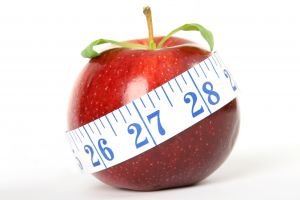By Dr. Janet Brill
 Cardiovascular disease (primarily heart attacks and stroke) is the #1 killer of American men and women and continues to occur in epidemic proportions (dwarfing all other causes of death including all types of cancer and diabetes). Adults with diabetes are two to four times more likely to have heart disease or suffer a stroke than people without diabetes. Over 100 million Americans have an unhealthy level of cholesterol, a major risk factor for cardiovascular disease. Here is an easy way to take charge of your heart health. Simply adding in 9 foods and a short walk to your day can significantly and quickly lower your “bad” LDL cholesterol level and decrease your risk of developing heart disease. Here’s how:
Cardiovascular disease (primarily heart attacks and stroke) is the #1 killer of American men and women and continues to occur in epidemic proportions (dwarfing all other causes of death including all types of cancer and diabetes). Adults with diabetes are two to four times more likely to have heart disease or suffer a stroke than people without diabetes. Over 100 million Americans have an unhealthy level of cholesterol, a major risk factor for cardiovascular disease. Here is an easy way to take charge of your heart health. Simply adding in 9 foods and a short walk to your day can significantly and quickly lower your “bad” LDL cholesterol level and decrease your risk of developing heart disease. Here’s how:
Step 1: Eat oatmeal. Oats are a highly nutritious whole grain that is filled with a special type of cholesterol-lowering soluble fiber called beta-glucan. Beta-glucan soaks up cholesterol and pushes it through the digestive system so that it is not absorbed. The fiber in oats also binds up bile acids in the intestine so they are excreted. This forces the liver to make more bile acids to replenish the lost supply which leads to lower LDL cholesterol. What’s more, oats contain a powerful type of antioxidant unique only to oats. Antioxidants counteract the destructive and atherosclerosis-inducing damage of dangerous free-radicals.
Almonds are chock full of all kinds of heart-healthy ingredients such as monounsaturated fat (like olive oil) and fiber.
Step 3: Eat Flaxseeds. Who knew that these tiny, glossy, reddish-brown seeds could provide such tremendous health benefits? Flaxseeds are a wonderful plant source of omega-3 or anti-inflammatory fats. Considering that atherosclerosis is an inflammatory disorder, including more omega-3 fats in your diet is a smart move for the prevention of heart disease. But when it comes to specifically lowering LDL, it is two other components of flaxseeds that target cholesterol: lignan and fiber. Lignans are hormone-like plant chemicals that function as powerful antioxidants and dampen the actions of two key cholesterol producing enzymes. Just make sure to grind up the flaxseeds before eating them as the body can not digest them fully due to their thick coating.
Step 4: Take Metamucil. When people think laxatives, they think regularity. But did you know that the special kind of fiber in Metamucil, psyllium husk, is one of the most potent cholesterol-lowering agents there is plus promotes a healthy digestive tract too? Psyllium husk lowers LDL by promoting bile acid excretion (like oats) and by preventing the absorption of cholesterol into the body.
Step 5: Eat Beans. Beans tend to be overlooked in the typical American diet which is unfortunate because beans are one of the best foods you can eat to protect your heart. A delicious, low fat source of protein, beans are full of heart healthy vitamins, minerals and are one of the richest sources of cholesterol-lowering soluble fiber. Legumes (beans, peas and lentils) reduce LDL by promoting the health of friendly bacteria in the colon. The bacteria ferment the beans, releasing healthful byproducts that travel to the liver and squelch the production of cholesterol.
 Step 6: Eat Apples. An apple a day keeps the cardiologist away! Apples contain another type of cholesterol-lowering fiber called pectin. Another ingredient in apples, called polyphenols, functions as a strong antioxidant and also prompts the liver to increase clearance of LDL cholesterol. Make sure to eat the skin as it contains the highest level of antioxidants.
Step 6: Eat Apples. An apple a day keeps the cardiologist away! Apples contain another type of cholesterol-lowering fiber called pectin. Another ingredient in apples, called polyphenols, functions as a strong antioxidant and also prompts the liver to increase clearance of LDL cholesterol. Make sure to eat the skin as it contains the highest level of antioxidants.
Step 7: Eat Phytosterols. Phytosterols are a plant’s version of cholesterol and are a highly effective means of reducing LDL plus have an excellent safety record. Phytosterols masquerade as cholesterol and are absorbed into the intestinal cells in lieu of cholesterol. There are plenty of phytosterol-fortified products on the market such as margarine, OJ or yogurt. You can also pop the pills, Cholest-OFF is a popular brand. (Aime for 2-3 grams a day spread across three meals.) One caveat, absorption of fat-soluble vitamins may decrease. So, just make sure to get in the government-advocated “5-a-day” number of fruits and vegetables to counterbalance this effect.
Step 8: Eat Soy Protein. Soy foods are low in saturated fat, cholesterol-free, filled with vitamins, minerals and fiber and are as good as it gets for a perfect protein. Soy contains isoflavones, hormone-like substances that lower LDL by promoting an increase in uptake of LDL by the liver. Soy also exhibits a strong antioxidant capacity, linked with decreased inflammation of the arteries. Plus, if you eat soy in place of animal protein, you automatically lower your intake of 2 potent cholesterol-raising substances: cholesterol and saturated fat.
Step 9: Eat Garlic. Vampires hate it, but the heart loves garlic! Garlic is a regular chemical factory with lots of active ingredients that not only lower LDL but also function as a powerful antioxidant and blood thinner. Garlic lowers LDL by dampening the activity of the main cholesterol-producing enzyme in the liver. Eating as little as a clove a day has been shown to rev up the bodies ability to dissolve blood clots. A blood clot sealing off a plaque-filled artery is often the final lethal step in a heart attack.
 Step 10: Walk. Walking is one of the simplest, safest and least expensive LDL-lowering strategies there is. Walking just 30 minutes a day protects your heart by increasing the size of the LDL particle (bigger is better), decreasing inflammation and targeting dangerous belly fat. Just remember to pick up the pace as faster is better for health and longevity.
Step 10: Walk. Walking is one of the simplest, safest and least expensive LDL-lowering strategies there is. Walking just 30 minutes a day protects your heart by increasing the size of the LDL particle (bigger is better), decreasing inflammation and targeting dangerous belly fat. Just remember to pick up the pace as faster is better for health and longevity.
Take charge of your own health, add in these 10 simple steps to your day as an effective alternative or complement to prescription medications for lowering cholesterol and preventing heart disease!
– Janet Bond Brill, Ph.D., is a registered dietitian, licensed dietitian/nutritionist and author of Cholesterol Down: 10 Simple Steps to Lower Your Cholesterol in 4 Weeks—Without Prescription Drugs (Three Rivers Press, 2006) ; Prevent a Second Heart Attack: 8 foods, 8 Weeks to Reverse Heart Disease (Three Rivers Press, Feb. 2011) and coming soon: Blood Pressure Down: The10-Step Plan to Lower Your Blood Pressure in 4 Weeks—Without Prescription Drugs (Three Rivers Press, 2013). Dr. Janet is a nationally recognized nutrition, health and fitness expert, specializing in cardiovascular disease prevention with the goal of promoting optimal health and preventing diet-and-lifestyle related disease.
For more information on Dr. Janet or her books please visit www.DrJanet.com

Hi Dr. Janet, I purchased your book 6 weeks ago when I found out my cholesterol levels were very high. On 1/7/2013 my Total cholesterol was 260, LDL was 170 after following your 10 simples steps, as of 2/22/2013 my total cholesterol is 201, LDL is 117. Thank you!!! I will be incorporating these 10 simple steps into my daily routine for the rest of my life 🙂
Great to read Vivian!